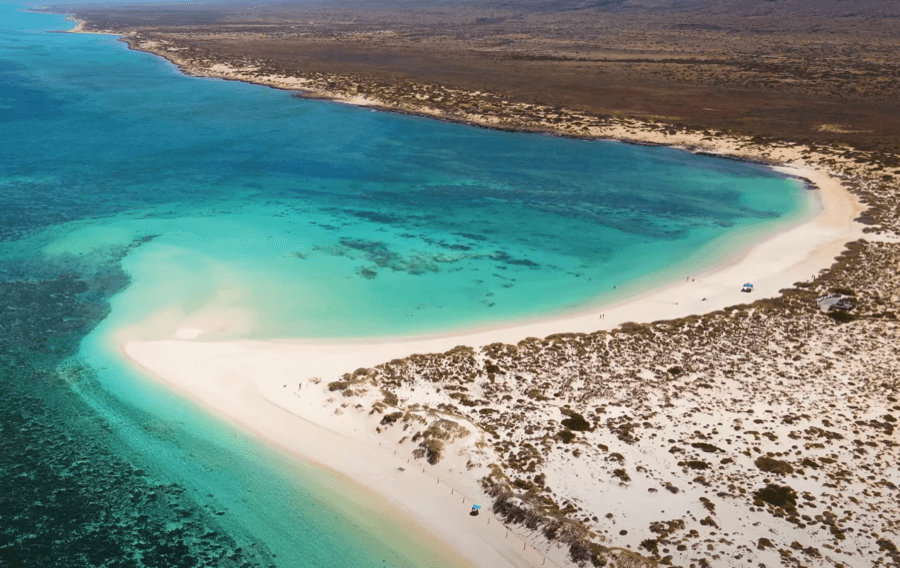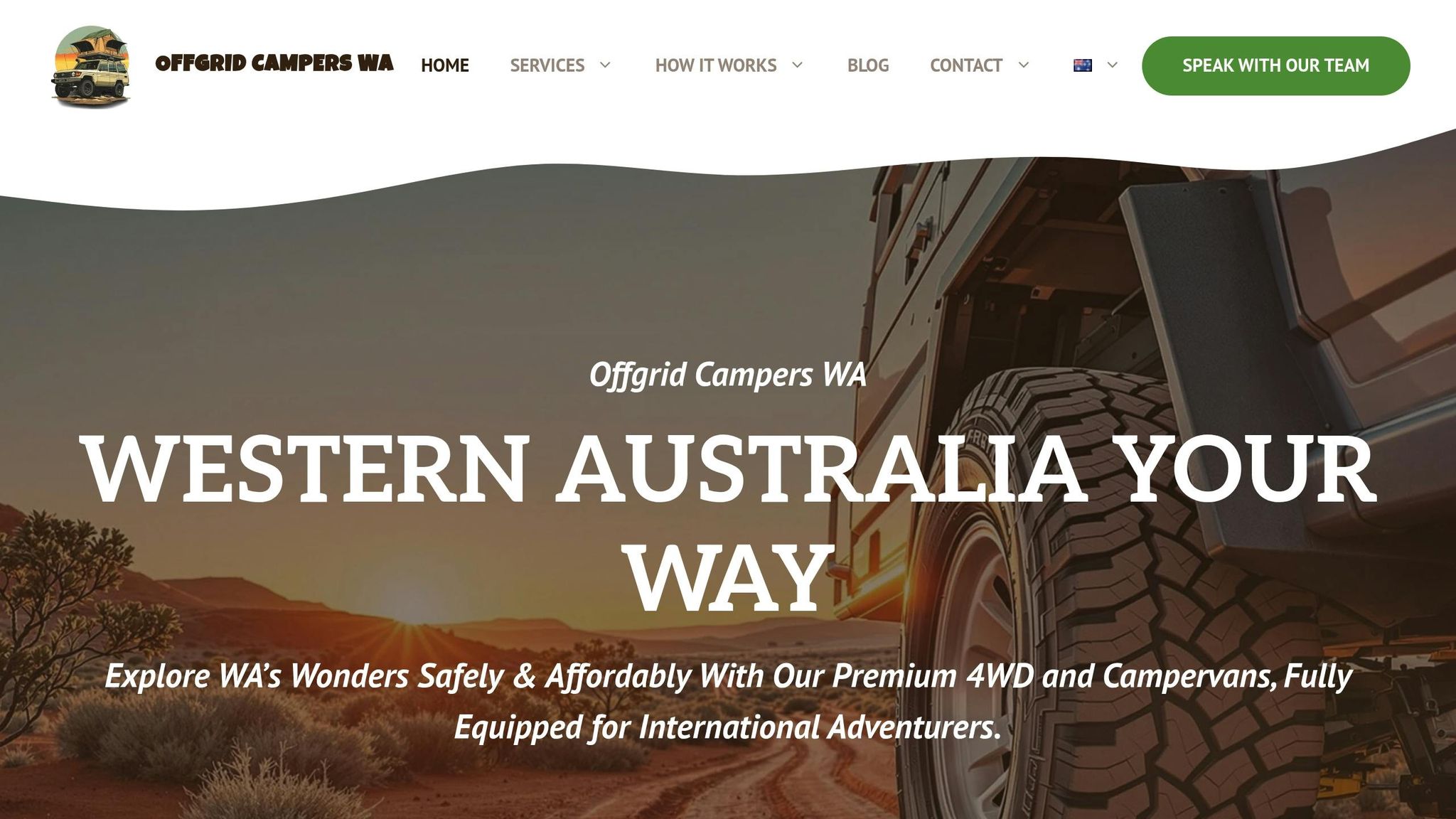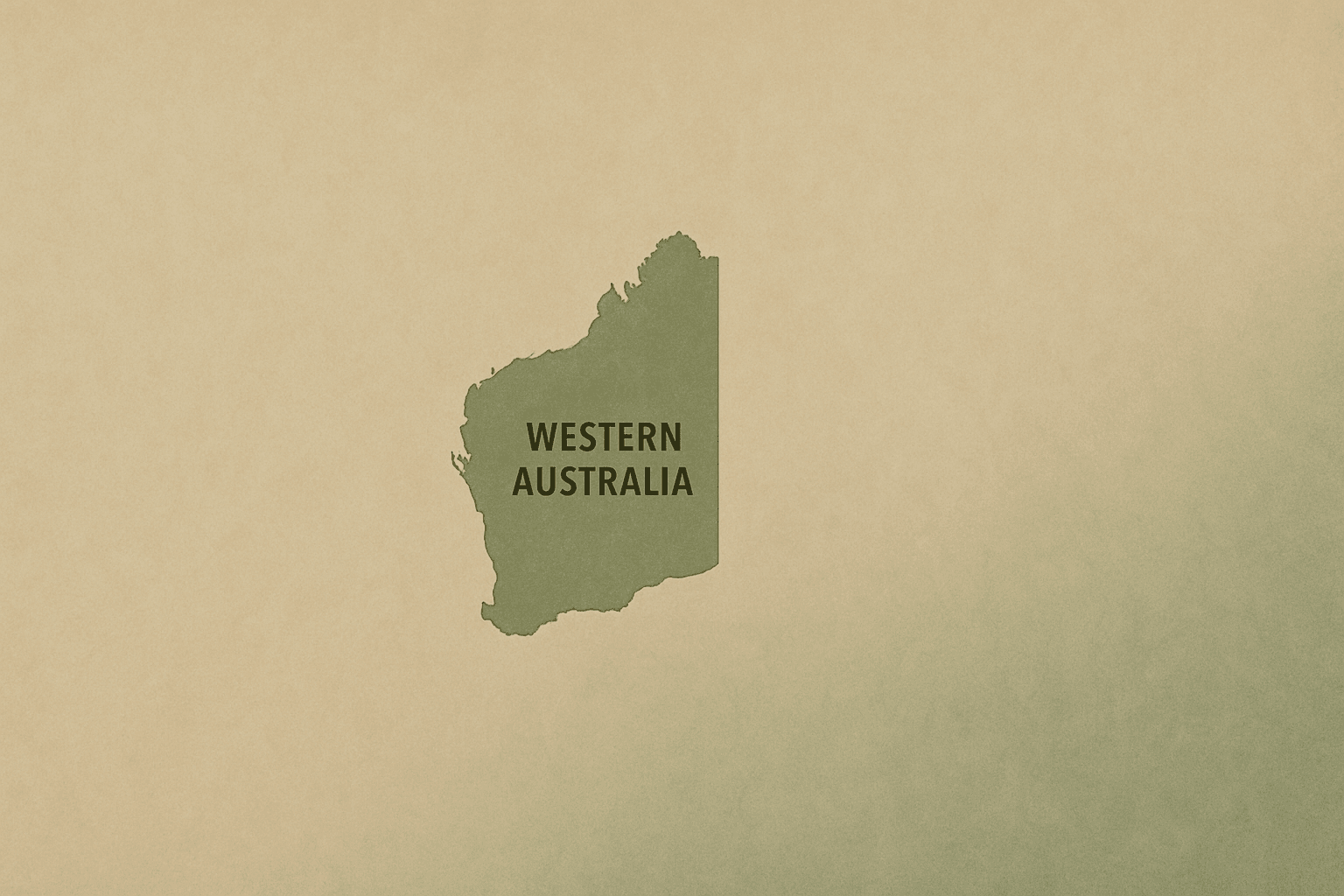Last Updated on October 4, 2025
Dreaming of one of Australia’s most iconic road trips? I know the feeling! The Perth to Broome drive covers over 2,800 km of the most incredible landscapes, from bright white beaches to rugged red earth.
As someone who grew up exploring every corner of WA, I can tell you that a bit of planning makes all the difference on this trip. It’s all about knowing when to go, what to see, and how to stay safe in our beautiful, remote backyard.
I’m Sophie, and I’ve done this trip more times than I can count. I’m here to share everything I’ve learned to help you plan an amazing drive.
Here’s a quick look at what you need to know:
- Best Time to Go: May to September offers the perfect balance of sunny days and cool nights.
- Top Route: The Coastal Route is fantastic for first-timers, covering 2,353 km with plenty of fuel stops.
- Can’t-Miss Spots: Shark Bay, the incredible Ningaloo Reef, Karijini National Park, and the famous Cable Beach in Broome.
- My Top Tips: Always top up your fuel, avoid driving after sunset, and make sure you have plenty of water and offline maps.
Ready to hit the road? Let’s walk through the details together.
Perth to Broome Road Trip: The ULTIMATE Western Australia Road Trip
Planning Your Perth to Broome Road Trip
Getting your Perth to Broome road trip right starts with solid planning. Western Australia’s huge distances and remote areas mean that your timing, route choice, and permits are super important for a smooth trip.
When to Travel and Weather
The dry season, from May to September, is absolutely the best time to be on the road. You’ll get clear blue skies, comfortable temperatures perfect for exploring, and almost no rain.
If you’re travelling between mid-June and mid-August, you’ll be there in peak season. It’s popular for a reason, but just expect a few more friendly faces at the major attractions.
Travelling outside the dry season can be tricky. From December to March, the north gets very hot and humid, and there’s a risk of cyclones. During the wet season (November to April), temperatures often sit between 25°C and 33.6°C, and heavy rains can cause flooding that closes roads and national parks. For fewer crowds and decent weather, the shoulder months of April or October can be great. Just be sure to check the latest updates from the Bureau of Meteorology and Main Roads WA before you head off.
Once you’ve picked your travel dates, it’s time to choose a route that matches your style.
Route Options and Planning
You’ve got three main routes to choose from for your Perth to Broome drive, and each one offers something a little different. I’ve found that thinking about what you want to see most helps make the decision easier.
| Route | Distance | Driving Time | Main Attractions | Best For |
|---|---|---|---|---|
| Coastal Route | 2,353 km | 25 hours | Jurien Bay, Pinnacles, Kalbarri, Shark Bay, Exmouth/Ningaloo Reef | First-timers and ocean lovers |
| Inland Route | 2,046 km | 22.5 hours | New Norcia, Karijini National Park, Marble Bar | Outback adventurers and hikers |
| Hybrid Route | 2,704 km | 30 hours | A mix of coastal and inland highlights | Those who want it all |
The Coastal Route is my top recommendation for first-timers. It follows Highway 1 and is packed with stunning beaches and seaside towns, plus it has plenty of fuel and supply stops, which takes a lot of stress out of the drive.
The Inland Route is for those who want to see the rugged heart of WA. It takes you along National Highway 95 through incredible red earth landscapes and ancient gorges. If you’re a keen hiker, this is the route for you.
And if you can’t decide, the Hybrid Route gives you the best of both. A popular way to do it is to follow the coast up to Exmouth and then cut inland to experience Karijini National Park before heading to Broome.
No matter which path you take, plan your overnight stops and fuel breaks carefully. This is especially true on the inland sections, where roadhouses can be hundreds of kilometres apart.
Navigation and Permits
Good preparation goes beyond just picking your route. I always recommend downloading offline maps on an app like `Hema Maps` or `Maps.me` and carrying a physical road atlas as a backup. Many of our OffGrid Campers WA vehicles come with Starlink connectivity, which is fantastic for checking weather and road conditions in remote spots.
If your trip takes you through certain reserved lands, you’ll need a Transit Permit. For example, the Great Central Road between Laverton and the Northern Territory border requires a permit from the Aboriginal Affairs Planning Authority Lands Permit System (ALPS). These permits are free, but you should apply at least 4-6 weeks in advance. You can use the ALPS Interactive Map to see if your route crosses any of these areas. Be aware that fines can be issued if you’re caught without the right permits.
If you plan on visiting a few national parks, buying a Parks Pass online before you go is a great way to save money on entry fees. Finally, a big tip from me: avoid driving at night. Cattle and kangaroos often wander onto the roads, especially in the Kimberley, creating a serious safety risk once the sun goes down.
Must-Visit Destinations: Beaches, Red Earth and Remote Towns
The drive from Perth to Broome is filled with incredible stops that really show off WA’s natural beauty. From World Heritage-listed marine parks to landscapes that are billions of years old, every stop adds another layer to your trip.
Coastal Highlights: Shark Bay and Ningaloo Reef
Shark Bay is a true marine paradise. This World Heritage site is home to vast seagrass beds that support one of the world’s largest dugong populations. At Hamelin Pool, you can see stromatolites, which are living fossils that offer a glimpse back in time. And of course, there’s Monkey Mia, famous for the wild bottlenose dolphins that have been visiting the shore for over 50 years. The first feeding experience usually starts around 7:45 am, so it’s worth getting there early.

Ningaloo Reef offers one of the most amazing wildlife experiences you can have. It’s Australia’s largest fringing reef and has been a UNESCO World Heritage Site since 2011. The best part is how accessible it is, you can snorkel right off the beach! The reef is home to over 500 species of fish. From March to July, you can swim with whale sharks, the gentle giants of the ocean. Tour operators like Ningaloo Discovery often report sighting success rates of over 95% during the season. Then, from June to November, humpback whales pass through on their annual migration.
“Beside the red soils of the Cape Range lies the turquoise lagoons of Ningaloo Reef, home to some of the world’s most incredible marine creatures.” – Australia.com
“Swimming with whale sharks is a once-in-a-lifetime experience that connects you directly with the ocean’s most incredible inhabitants.” – TRAVEL.COM®
If you’re watching your budget, the shoulder seasons of April-May or September-October are ideal. Accommodation is usually a bit cheaper, and the crowds are smaller.
Inland Attractions: Karijini National Park and Kalbarri
Karijini National Park is a geological wonder that feels like another world. Its ancient gorges have been carved out over 2.5 billion years. There are walks for all fitness levels, from the easy Dales Gorge rim walk to more challenging trails. For the adventurous, the Class 5 trail through Hancock Gorge includes the famous “Spider Walk” and ends at the beautiful Kermit’s Pool. Just remember to check the trail class system, as Class 5 hikes require a high level of fitness.

Kalbarri National Park gives you a stunning mix of inland gorges and coastal cliffs. The Kalbarri Skywalk is a must-do, with two platforms that extend 25 metres over the Murchison River gorge, offering breathtaking views. Another iconic spot is Nature’s Window, a natural rock arch that perfectly frames the river. It’s an easy one-kilometre return walk from the car park. From July to October, the park is also famous for its incredible wildflower displays.
Remote Towns: Carnarvon, Marble Bar, and Broome
Carnarvon is a great place to stop and refuel. The Gwoonwardu Mia Gascoyne Aboriginal Heritage and Cultural Centre shares the stories of the region’s five Aboriginal language groups. For something different, the Carnarvon Space and Technology Museum is surprisingly fascinating and details Australia’s role in the space race. Don’t miss the “Fruit Loop” drive to buy fresh produce directly from the farms.
Marble Bar is famous for being one of Australia’s hottest towns. It has a rich gold rush history that you can see in its heritage buildings. A visit between April and September is best to avoid the most extreme heat.
Broome is the perfect place to finish your road trip. Cable Beach is legendary for its 22 kilometres of white sand and incredible sunsets, and a camel ride at dusk is an experience you won’t forget. The town’s pearling history is everywhere, and you can visit unique spots like Sun Pictures Cinema, the world’s oldest operating outdoor cinema.
For a great meal and a taste of local beer, I love heading to Matso’s Broome Brewery. Also, check the dates for the Staircase to the Moon, a natural phenomenon that happens between March and October when the full moon rises over the tidal flats of Roebuck Bay. And don’t forget the Malcolm Douglas Broome Crocodile Park, which is home to over 2,500 crocodiles.
Vehicle Setup for Off-Grid Travel
Driving from Perth to Broome means travelling through some of Australia’s most remote country. Having the right vehicle setup is essential for a safe and comfortable trip. It’s all about being self-sufficient.
OffGrid Campers WA Vehicle Features

Solar Power Systems are the heart of our campers. They come with solar panels, high-capacity batteries, and inverters. We use 100-110 Ah lithium batteries, which are a great choice. A 100Ah lithium battery often weighs less than half of its lead-acid equivalent and can last up to 10 times longer, giving you more reliable power.
Water Storage and Management is so important out here. I always suggest planning for about 10 litres of water per person, per day. That covers drinking, cooking, and a quick clean-up.
Energy-Efficient Appliances help conserve your power. All our vans use LED lighting and have portable cookers that are designed to use minimal energy. The high-quality solar panels have up to 25% conversion efficiency, so you get the most out of the WA sunshine.
Connectivity Solutions like Starlink internet are a real advantage in isolated areas. It means you can easily check weather updates, look at maps, and call for help in an emergency.
4WD Capability opens up some of WA’s best-kept secrets, like parts of the Kimberley and Pilbara regions. However, we do have restrictions on heavy-duty off-roading to keep our vehicles reliable and ensure you stay safe.
Safety and Emergency Gear
Communication and Navigation Equipment is non-negotiable in remote WA. A satellite device like a Personal Locator Beacon (PLB) or a satellite messenger like a Garmin inReach is a must. PLBs, such as those from GME or Ocean Signal, send a distress signal directly to emergency services when mobile coverage is zero.
Vehicle Recovery and Repair Tools are essential for peace of mind. Always carry jumper cables, a good spare tyre with a pressure gauge, and a basic toolkit. Knowing how to change a tyre and adjust your pressures for different road surfaces is a key skill for this trip.
Emergency Supplies should include a well-stocked first-aid kit with bandages, antiseptic wipes, pain relievers, and any personal medications. A fire extinguisher and fire blanket are also vital.
Emergency Food and Water are your backup for unexpected delays. Always have a few extra litres of water and some non-perishable food. A portable, pressurised shower like a RinseKit is also handy for cleaning up or even helping to put out a small fire.
And please, always share your itinerary with someone back home before you leave.
Leave No Trace Travel
Having the right gear is one thing, but travelling responsibly is what protects these beautiful places for everyone. It’s all about following the seven principles of Leave No Trace Australia.
- Plan Ahead and Prepare: Know your route and what to expect.
- Travel and Camp on Durable Surfaces: Use established campsites and tracks.
- Dispose of Waste Properly: If you pack it in, pack it out. That includes all food scraps.
- Leave What You Find: Take photos, not souvenirs.
- Minimise Campfire Impacts: Use a camp stove where possible and always adhere to fire bans.
- Respect Wildlife: Observe animals from a distance and never feed them.
- Be Considerate of Others: Respect local communities and fellow travellers.
A simple tip I always follow is to use biodegradable soap and make sure I’m at least 50 metres away from any river or waterhole when I use it. It’s a small thing that makes a big difference.
Trip Summary and Final Tips
With some good planning, your road trip through Western Australia will be an unforgettable experience. This 14-20 day trip takes you through an amazing variety of landscapes. The real secret is giving yourself enough time to properly enjoy each stop.
Road Trip Success Tips
- Plan your trip between May and September: These cooler months are much more comfortable for camping and exploring.
- Book early: Make sure you book your OffGrid Campers WA vehicle and popular accommodation spots like Monkey Mia and Ningaloo well in advance.
- Refuel whenever you can: My number one rule! Top up your tank at every petrol station. Distances between towns can be huge.
- Avoid driving at night: The risk of hitting wildlife after dark is very high, so it’s best to stick to daytime driving.
- Arrive early at free camping spots: This helps you get a good spot and check for any local camping rules.
Making the Most of Western Australia
- Take it slow: Places like The Pinnacles Desert, Kalbarri National Park, and Karijini National Park are too good to rush. Slowing down lets you appreciate them properly.
- Chat with the locals: Visitor centres are great, but the people who live there often have the best tips on hidden gems and current road conditions.
- Travel sustainably: Bring reusable water bottles and shopping bags to reduce waste. Supporting local businesses, like Narlijia Experiences Broome where Indigenous guides share their culture, makes your trip more meaningful.
- Pack the essentials: Don’t forget plenty of water, high-SPF sunscreen, insect repellent, swimwear, snacks, and offline maps.
- Buy a national park pass online: It will save you time and money.
With a reliable vehicle from OffGrid Campers WA and some smart planning, your Western Australia road trip is sure to be safe, fun, and full of incredible memories.
FAQs
What are the essential safety tips for driving on remote roads between Perth and Broome?
Driving in remote WA is an amazing experience, but safety comes first. Here are my top tips:
- Stock up on essentials: Always carry extra water, food, and fuel. You can never be too prepared.
- Check your vehicle: Before you go, check your tyres (including the spare!), oil, and water.
- Watch out for wildlife: Animals are most active at dawn and dusk. I strongly recommend not driving at these times.
- Stay connected: Mobile reception is patchy at best. Carry a satellite phone or a PLB so you can always call for help.
- Be careful with road trains: These trucks can be over 50 metres long. Make sure you have at least 1.5 kilometres of clear, straight road before you even think about overtaking.
- Stay with your vehicle if you break down: It’s much easier for rescuers to find a car than a person.
How do I get permits to travel through Aboriginal lands on the Perth to Broome road trip?
To travel through certain Aboriginal lands, you’ll need an Entry Permit from the Aboriginal Lands Trust. You can apply for this online through the Western Australian Government’s website.
It’s best to apply well in advance, as processing can take around 4-6 weeks. The permits are generally free for tourists on main roads, but it’s always good to confirm when you apply. It’s so important to respect the cultural significance of these lands and follow any guidelines that come with your permit.
What makes the Hybrid Route a great choice for a Perth to Broome road trip?
The Hybrid Route is fantastic because it gives you a taste of everything. You get the beautiful beaches and marine life of the coast, plus the rugged gorges and outback landscapes of the inland.
You can see iconic places like Shark Bay and Karijini National Park all in one trip. It’s a really efficient way to experience WA’s famous highlights without feeling like you’ve missed out on either the coast or the outback. It’s perfect for travellers who want it all!

